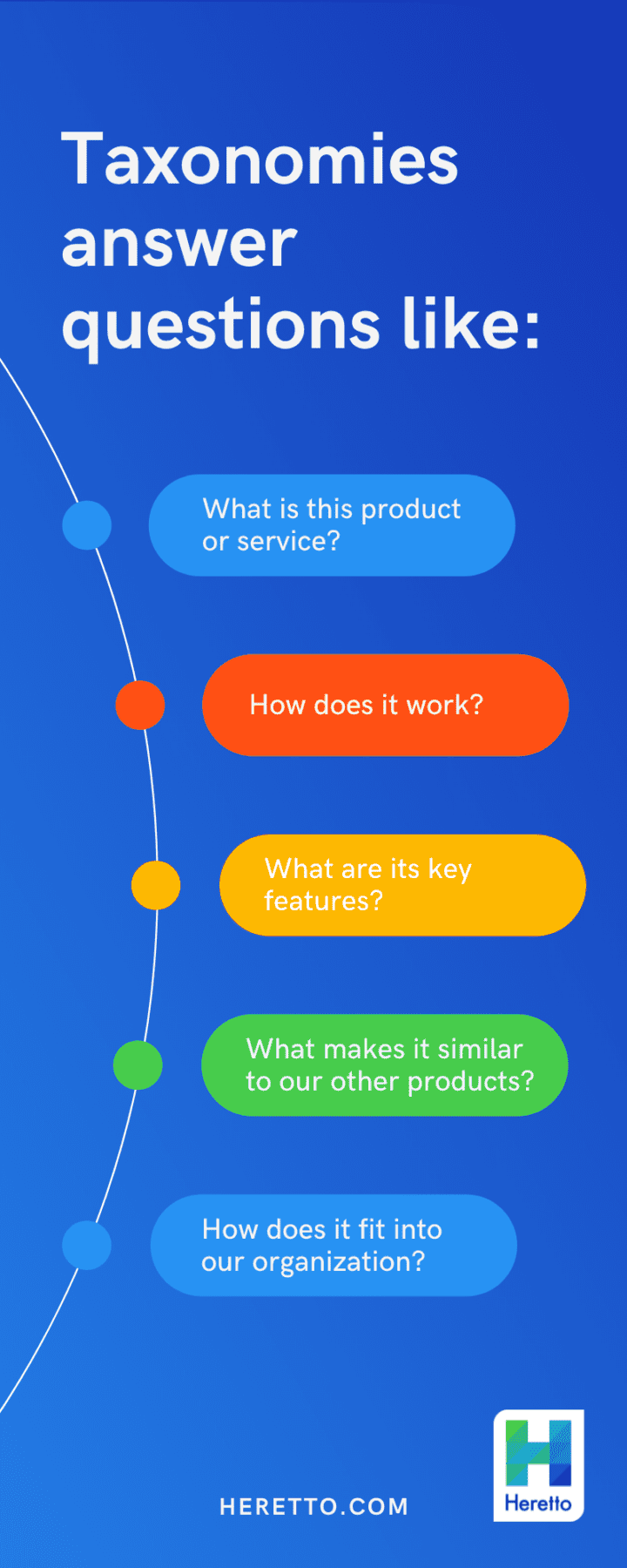Your taxonomy strategy can make or break a customer’s experience with your product.
Imagine opening up a restaurant menu and finding three choices: breakfast, lunch, and dinner. Under lunch the description says: “culinary delight featuring local ingredients in a traditional meal with a modern twist.” The descriptions for the other choices are just as vague. You stare at the menu for a few minutes, puzzled, and then leave. The restaurant might think they’re doing a good job because they have categories and descriptions, but they actually have a major taxonomy problem. They could be making the best food on the planet. But if they aren’t making it easy for customers to understand what they’re offering, their business is worthless.
Why are taxonomies so important to customers?

Our brains love order. We are constantly classifying things without even thinking about it. We love for the world to be organized in a way that makes sense. It makes us feel safe and understood. Too often we jump ahead to answer the question, “Why is this the best product” without first answering the question, “What is this?”. Taxonomies help your customers gain a deeper knowledge of your product. They communicate what exactly your product is and what its relationship is with other products.
An internal map
No matter what industry your organization is in, taxonomies are important. They clarify and classify exactly what products and services you provide and how they achieve your overall goals. Taxonomies answer questions like:
- What is this product or service?
- How does it work?
- What are its key features?
- What makes it similar to our other products?
- What makes it different from our other products?
- How does it fit into our organization?
Taxonomies are just as important for internal training. If your employees don’t know the answers to these questions or have varying responses, it only causes more confusion. Customers won’t be getting a clear, unified answer.
A customer-facing map
A taxonomy system isn’t simply categorizing products and services— it’s about creating a roadmap for customers to understand our products and find what they need. Without a good taxonomy system in place, you're leaving your customers to fend for themselves. If customers feel confused and abandoned they aren’t going to stick around very long. And we don’t have very long to grab our customer’s attention in the first place. According to this Neilson study, the average user leaves your website after only 10-20 seconds. We need to make sure that we’re not confusing customers more in what little time we do have.
Let’s get ultra-specific
Creating a good taxonomy system is more than just giving customers a lot of choices. Imagine opening a restaurant menu and finding 50 different unorganized options. Just reading all the choices would make you tired. And if they weren’t organized in any meaningful way, you would get confused. So how do we achieve ultra-specificity without overwhelming our customers with options? One way is to utilize nesting categories. The goal of nesting categories is to offer more specific options while eliminating irrelevant categories. For example, nesting categories turns this list:
- Tools
- Powertools
- Drills
- Corded drills
- Cordless drills
- Hammer drills
- Saws
- Table Saw
- Circular Saw
Into this list:
- Tools
- Powertools
- Drills
- Corded drills
- Cordless drills
- Hammer drills
- Saws
- Table saw
- Circular saw
Products that are organized within a taxonomy will leave you with contented customers.
How to start a taxonomy conversation
At this point you might be thinking “Taxonomies are great! Let’s get started!”. But you probably already have. Organizations create taxonomies whether they realize it or not. When taxonomies are created unintentionally, they tend to be ambiguous and disorganized. A bad taxonomy can make customer experience worse. The key then is to create a taxonomy with intention. Focus on your customer and how they interact with your products. When you’re ready to get started, talk to the people at your organization in charge of knowledge management, information architecture, and customer experience.
Tips for starting a taxonomy conversation at your organization:
- Come prepared with information. If possible, take an audit of your current taxonomy strategy and see where the gaps are.
- Use the questions at the beginning of this blog to assess your products
- Look up taxonomy examples in your industry. See what categories already exist.
- Finally, take your time creating your taxonomy structure. If your products are complex or technical, it can take some work to create a seamless taxonomy.
Creating a taxonomy strategy for your organization may be a little tricky at first, but it’s worth its weight in gold. With a solid taxonomy in place, you’re paving the way for a great customer experience.
Want to learn more about taxonomy?
Checkout this webinar from Heretto's own Jared Sickler that unpacks taxonomies in even more detail.




